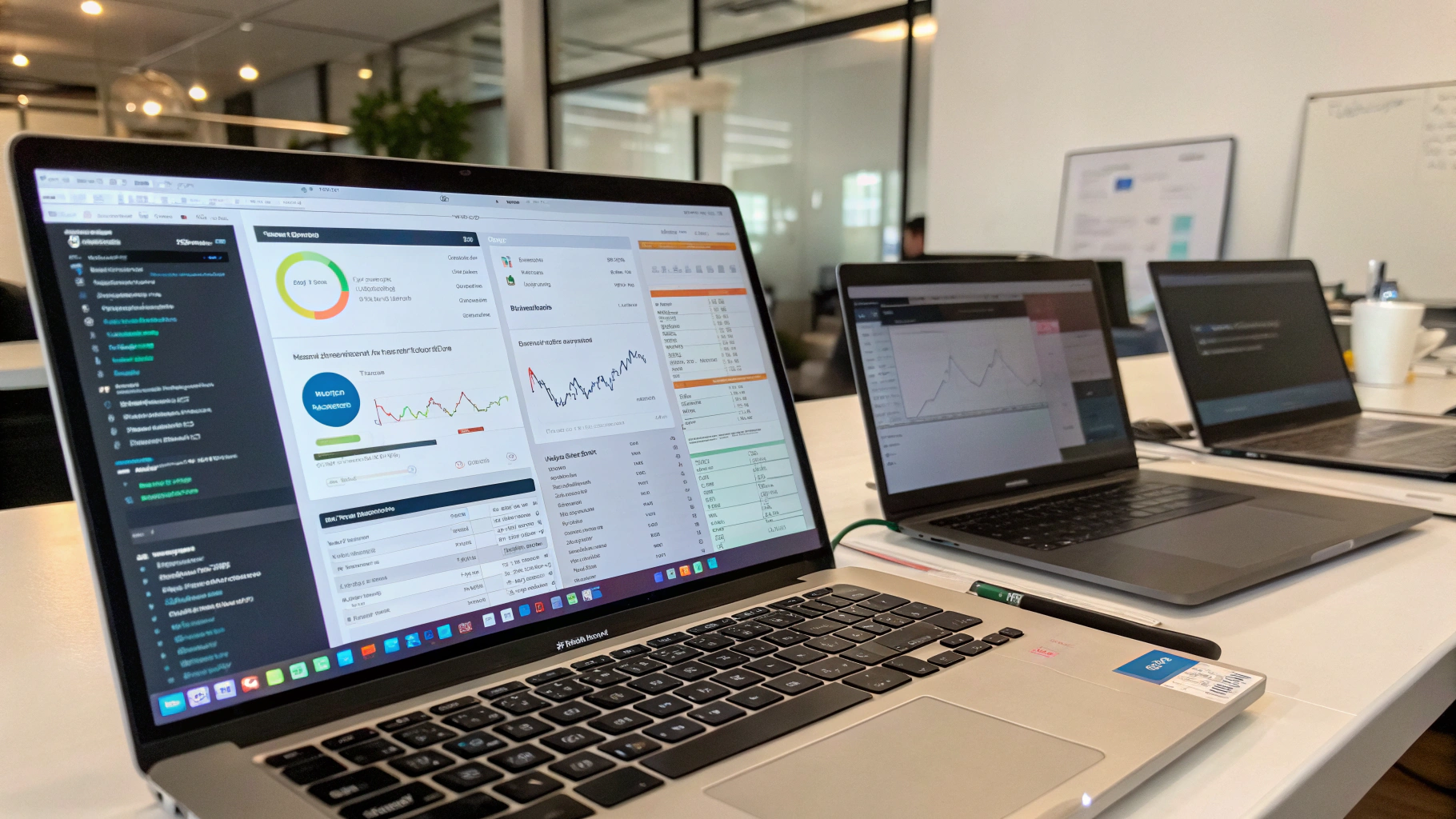Surf to the Top: Mastering Website Ranking
Are you amongst the 91% of content receiving zero traffic from Google? This shocking statistic reveals a harsh truth about digital visibility today. While millions of websites float in the vast internet ocean, only a fraction successfully ride the waves to the top of search results through effective SEO Surfing. What separates these high-performers from the rest, and how can you join their ranks?
The difference often comes down to understanding the mechanics of search engine ranking and implementing strategies that propel your website upward. Let’s explore how you can master the art of climbing search results and catching the perfect wave of organic traffic.
Why It Matters

Understanding website ranking is no longer optional—it’s essential for business survival. Studies show that 75% of users never scroll past the first page of search results. This means if you’re not ranking in the top 10 positions for your target keywords, you’re essentially invisible to three-quarters of your potential audience.
The economic impact is significant: businesses appearing on page one capture approximately 95% of web traffic for their targeted search terms. Each position matters tremendously—moving from position #2 to position #1 can increase click-through rates by up to 50%.
In today’s competitive digital landscape, mastering SEO Surfing provides a distinct competitive advantage, especially as paid advertising costs continue to rise and consumers increasingly prefer organic results over advertisements.
Core Concepts
Successful SEO Surfing begins with understanding how search engines evaluate websites. Think of search engines as sophisticated librarians organizing billions of web pages. They use complex algorithms considering over 200 factors, including:
- Relevance factors: How well your content matches user intent
- Authority metrics: How trustworthy your site appears based on backlinks and expertise
- Technical elements: How well your website functions and delivers information
- User experience signals: How visitors interact with your site
These algorithms constantly evolve, with Google making thousands of updates annually. The most significant recent shift has been toward prioritizing user experience and content quality through updates like Core Web Vitals and various helpful content updates.
Achieving Organic Ranking success requires viewing SEO not as a single technique but as an ecosystem of interconnected strategies working in harmony.
Strategy or Implementation Guide
Step 1: Conduct Comprehensive Keyword Research
Begin by identifying search terms your target audience uses. Look beyond volume to consider search intent, competition, and business relevance. Cluster related keywords into themes that can guide content creation.
Tools like SEMrush, Ahrefs, or even Google’s Keyword Planner can reveal valuable insights about search patterns and competitive landscapes in your niche.
Step 2: Optimize On-Page Elements
Once you’ve identified target keywords, strategically place them in:
- Page titles (keeping under 60 characters)
- Meta descriptions (compelling, under 160 characters)
- URL structures (concise, readable)
- Heading tags (hierarchical H1-H6 structure)
- Opening paragraphs and throughout content naturally
- Image alt text and file names
Remember that keyword stuffing is counterproductive; maintain natural language that prioritizes readability.
Step 3: Create Superior Content

Content remains king in the Google Climb. Develop comprehensive resources that thoroughly address user questions and needs. Aim for content that is:
- In-depth (typically 1,500+ words for competitive topics)
- Well-structured with clear headings and scannable formatting
- Enhanced with relevant images, videos, or infographics
- Updated regularly to maintain freshness and accuracy
- Original and offering unique insights or perspectives
Step 4: Build Technical Foundation
Technical SEO forms the crucial infrastructure for your SEO Surfing success:
- Ensure mobile responsiveness across all devices
- Optimize page loading speeds (aim for under 2.5 seconds)
- Implement proper schema markup for enhanced SERP features
- Create XML sitemaps and submit to search engines
- Establish clean URL structures and internal linking architecture
- Secure your site with HTTPS protocol
Step 5: Develop a Link Building Strategy
Quality backlinks remain powerful ranking signals, acting as “votes of confidence” for your content. Develop a strategic approach:
- Create linkable assets (research, tools, guides)
- Practice ethical outreach to relevant industry websites
- Participate in guest posting opportunities
- Leverage digital PR to earn mentions from news outlets
- Monitor and disavow toxic backlinks that might harm rankings
Benefits
Mastering SEO Surfing delivers substantial benefits beyond mere visibility:
- Sustainable traffic growth: Unlike paid advertising that stops when you stop paying, organic traffic continues flowing with proper maintenance.
- Higher conversion rates: Organic visitors often convert at 2-3x the rate of paid traffic because they’re actively seeking your solutions.
- Enhanced brand credibility: Top rankings convey authority and trustworthiness to potential customers.
- Improved user experience: Many SEO best practices simultaneously enhance usability and satisfaction.
- Competitive intelligence: The SEO process reveals valuable insights about market trends and competitor strategies.
Case Study / Example
Consider an e-commerce furniture retailer struggling with declining traffic and conversions. After implementing a comprehensive SEO Surfing strategy:
- They identified underperforming but high-potential product categories through keyword research
- Created in-depth buying guides addressing common customer questions
- Optimized product pages with enhanced descriptions, schema markup, and faster loading speeds
- Built backlinks through home décor publications and influencer partnerships
Results after six months:
- 143% increase in organic traffic
- 89% improvement in conversion rates
- 67% reduction in customer acquisition costs
- 5 featured snippets acquired for high-value keywords
Tools & Resources
Accelerate your Organic Ranking journey with these essential tools:
- Research tools: Ahrefs, SEMrush, Moz Pro
- Technical SEO: Screaming Frog, Google Search Console, GTmetrix
- Content optimization: Clearscope, Surfer SEO, MarketMuse
- Local SEO: BrightLocal, Whitespark, Google Business Profile
- Rank tracking: SERP Robot, Accuranker, Wincher
- Analytics: Google Analytics 4, Looker Studio, Hotjar
Common Mistakes to Avoid
Steer clear of these pitfalls that can derail your SEO Surfing efforts:
- Ignoring search intent: Matching content to user expectations is more important than keyword density.
- Neglecting mobile optimization: With mobile-first indexing, desktop-only optimization is insufficient.
- Pursuing quantity over quality in backlinks: A few authoritative links outweigh many low-quality ones.
- Overlooking page speed: Each second of delay can reduce conversions by up to 7%.
- Focusing solely on rankings: Traffic and conversions are ultimately more valuable metrics.
Future Trends
The Google Climb continues to evolve. Stay ahead by preparing for these emerging trends:
- AI-generated content evaluation: Search engines are getting better at distinguishing valuable AI content from low-quality mass production.
- Voice search optimization: Conversational queries require more natural language optimization.
- Visual search enhancement: Image optimization becomes increasingly important as visual search capabilities expand.
- E-E-A-T prioritization: Experience, expertise, authoritativeness, and trustworthiness signals gain importance for sensitive topics.
- Zero-click results: Optimizing for featured snippets while still driving site visits becomes crucial.
Conclusion
Mastering SEO Surfing isn’t about quick tricks or temporary tactics—it’s about building a robust, user-centered online presence that search engines naturally want to reward. By implementing the strategies outlined in this guide, you’ll be well-positioned to ride the wave to the top of search results while your competitors get left behind in the digital undertow.
Remember that SEO is a marathon, not a sprint. Consistent application of best practices, adaptability to algorithm changes, and unwavering focus on user needs will ultimately determine your success. Start implementing these strategies today, and watch your website climb steadily toward the coveted top positions.
FAQs
How long does it take to see results from SEO efforts?
While minor improvements may appear within weeks, significant ranking changes typically require 3-6 months of consistent effort. Highly competitive industries may take longer.
Is it better to focus on technical SEO or content creation?
Both are essential components of a successful strategy. Technical SEO provides the foundation, while quality content gives search engines something valuable to rank.
How often should I update my SEO strategy?
Review performance metrics monthly, conduct keyword research quarterly, and perform comprehensive strategy reviews bi-annually or after major algorithm updates.
Can small businesses compete with larger companies in search rankings?
Absolutely! By focusing on specialized niches, local search opportunities, and creating superior content, small businesses can often outrank larger competitors for targeted keywords.
How do I measure SEO success beyond rankings?
Track organic traffic growth, engagement metrics (time on page, bounce rate), conversion rates from organic visitors, and return on investment compared to other marketing channels.

